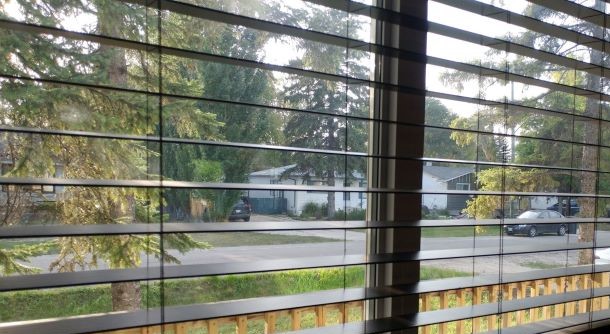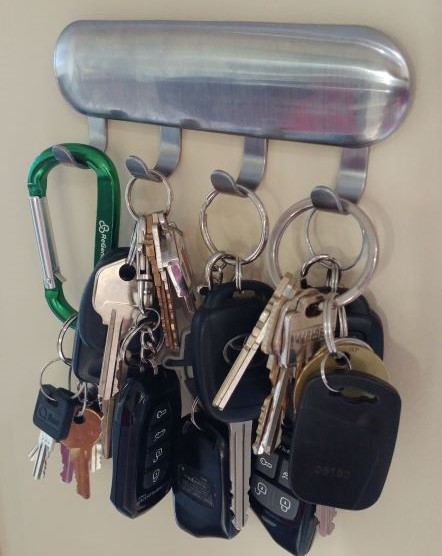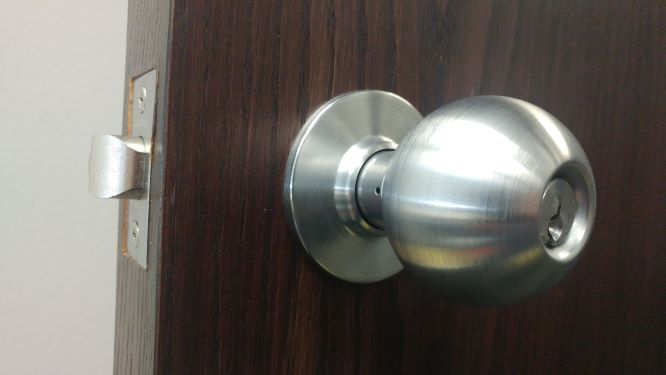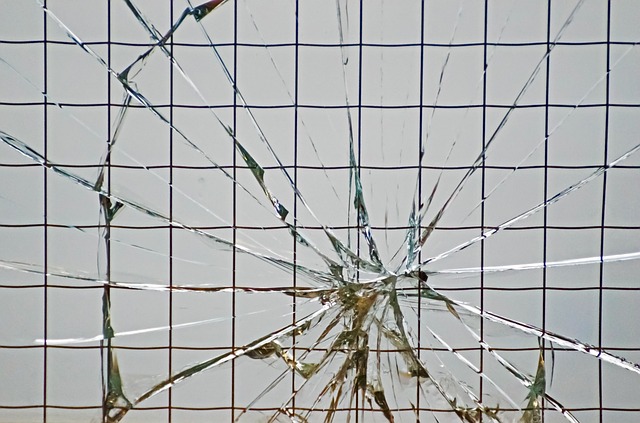Avoid Becoming a Victim of a Burglar
If you are a homeowner, this article is a must read. There is a lot of misconceptions out there about keeping your home safe. If you follow my tips, your chance of being a victim of a break and enter will be greatly reduced.
Burglaries are among the most common property crimes home owners face. In 2017, 158,161 Canadian households were victims of burglaries. Thankfully, steps can be taken to reduce your chance of being part of this statistic. If you know how a burglar thinks, you’ll be in a better position to keep your house safe.
What does a burglar look for when choosing a home?
Most instances of break and enters into residential homes are not at complete random. Most criminal understand the high risk taken in committing a B&E and will seek homes they know contain high-value property. This includes:
- jewelry;
- safes;
- collectibles;
- cash;
- electronics; and,
- firearms.
Before committing a break and enter, the burglar will likely scope out your home. If you live in a more affluent area of the city, burglaries will know you are more likely have high-valued property. The more of these kind of items that you have in view around the house, the more likely your residence will be targeted for a break and enter.
Burglars will look for weakness in your home security. A burglar will often try coming to the front door first. They will likely ring the door bell and knock to see if anything is home. If no one answers, they will try opening the door. If you failed to lock the door, the burglar will simply come right in. If that doesn’t work, next they usually check the back door and windows.
Break and enters into residential properties usually occur during the day because people are at work, or running errands. This means most break end enters happen between 10 a.m. and 3 p.m. During the holidays when people are more likely to be on vacation, the chance of being a victim of a break and enter increases.
The longer a burglar spends in a home, the greater the chance of being detected. For this reason a burglar acts quickly when he or she breaks into a home. The average time for a break and enter is between 8 and 12 minutes.
How to Protect Yourself and Your Home from Becoming Victims of a Break and Enter
Now that you understand the basic of how a burglar thinks, you can take action to reduce your chances of becoming a victim.
(1) Being Vigilant
One of the most important things you can do to protect your home is to be vigilant of those in your neighbourhood. Becoming familiar with your neighbours and faces in your neighbourhood can put you on guard for when suspicious individuals are around. If you notice a vehicle that appears to be idling or circling the block, the person may be casing your street to determine how much activity is about. Isolated streets with little foot and vehicle traffic will be more attractive to burglars as it reduces their chances of being detected while committing a break and enter. If you notice a strange vehicle, write down the description of the driver, and the make, model and licence plate of the vehicle.

Keep an eye out for unusual foot traffic and strangers walking down the street. They might just be passing through, or they might be looking for their next target. Burglars are usually males in their mid-to-late teens. If you find someone coming around the house and peering in windows, or coming around the side of the house when he or she has no business of doing so, it’s a likely sign their up to no good. You may feel you want to confront the individual, but be cautious. He or she may be armed. In some instances, approaching a would be burglar can be enough to deter him or her from returning.
When you find suspicious vehicles and individuals in your neighbourhood, let your neighbours know about them. An active neighbourhood watch can help prevent break and enters, and protect your family and your home. Communities that have neighbours that look out for each other have reduced rates of residential break and enters.
(2) Securing the Outside of your Home
Take a walk around the outside of your home and take a look at it as if you were intending to break-in. If you find a window that’s easy to pry open, it will be easy for a burglar to do so. While walking around your home, peer in the windows. If you can see high-valued items, someone scouting out your house will be able to see the same. While I am not suggesting you completely redecorate your home, if you can make small adjustments to keep expensive items out of sight I would recommend it. Don’t make yourself a target.
Make sure shrubs and bushes around your property are well maintained. Shrubs and bushes can act as a hiding place for burglars. You don’t want to make yourself an easier target. On the other hand, certain types of bushes can help act as a deterrent. Placing thorny shrubs in front of a window can make it more difficult for a burglar to gain entry (or at least more painful for him).
A fence can be a useful deterrent to a would-be thief, however, solid wood fences can also act as cover. For the purposes of deterring burglars, a chain-link or metal fence is preferable. The bottom of the fence should be secured to not allow it to be lifted. Barb wire can be add to the top of a chain-link fence, or sharp point top for a metal fence to further deter burglars.
Leaving expensive items unsecured in your back yard or around your house is a sure way to attract the attention of a thief. Be sure to have expensive items, like bikes, barbecues grills and lawn motors, secured with anti-theft devices. Unlocked bicycles are a common target for thieves. Don’t leave tools and ladders laying around the yard. These things can quickly become tools for burglars to more easier gain entry into your home. Put items you are not using in the garage and make sure the garage is secured. If you have windows on your garage, put up curtains or blinds. This will make your garage a less tempting target.
Often times vehicles will become targets of theft during break and enters. If you have a key rack at your front or back door, you are inviting the thief to steal your vehicle. Don’t leave spare keys to your vehicle in an obvious to find place.

Installing motion sensor lighting is another easy way to increase your property’s security. Make sure to put the motion sensor lighting in area that thieves are most likely to tread. Nothing deters a thief in the middle of the night more than a spotlight being shone on him.
(3) Securing your Home from the Inside
Burglars don’t like spending a lot of time trying to get into a home. The longer it takes for them to break inside the home, the greater chance for him to be detected. When you are not home, always ensure all your windows and doors are locked. Even windows which appear difficult to reach from the ground outside will only take moments for a determined burglar to enter through. For another layer of protection, you can install security bars over windows.
As previously mentioned, keep high-value belongings out of sight from the view of windows. If a burglar looks though a window and can see your jewellery or wallet laying on your nightstand, your chances of becoming a victim of a break and enter will increase. If you wish to further secure the property, you can have a safe install in your home. Large safes are generally better due to the difficulty in moving them, however smaller safes can be just as good if they are properly bolted to the floor.
If you have moved into a new home, it’s vital to install new locks on all the doors. You don’t know how many copies of the old key may be floating around out there. It’s easy to do and well-worth the investment.

Burglars are much less likely to break into a home if you have an alarm system and surveillance cameras. Homes without security systems are more than twice as likely to be a victim of a break and enter than homes with security systems. Just be sure to always set that alarm when you are not home.
(4) Securing your Home while on Vacation
As mentioned before, the chances of being a victim of a break and enter increases when you are on vacation. However, certain precautions can be taken to reduce this risk. Before you leave, make sure all valuables are put away so that they are not in view of windows. If you have valuable jewelry or other goods, you may want to secure these items in a safety deposit box, or entrust them to a family member or a friend.
Be sure to double check that all door and windows are locked before you leave. While it may be tempting to close all your curtains and blinds, so burglars won’t be able to look in, it can be a give-away you are not home. A lived in home typically has some of their curtains or blinds open at any given time, so leave some open.
Other give-aways that you are on vacation include:
- if the mail starts piling up at the front door;
- if your garbage containers are not put out on garbage day;
- if it has snowed, and there are no tire tracks or footprints leading to the front door; and,
- if your yard is not well maintained and your grass is overgrown.
Don’t let this happen. Get a family member, neighbour, or friend to take care of these things and make your home look lived in. Speaking of making your home look lived-in, purchase outlet timers for lights around your home. Strategically set them up around your home for the lights to go on at times which will make your home appear occupied.
For information on the benefits of a home security system, please check out the Inspection Support Network’s article on Protecting Your Home Against Burglary.
Lastly, however tempting it may be, don’t post your vacation plans on social media. When you do, you are advertising that you won’t be home. The more people that know you aren’t home, the greater the odds are that information might end up in the hands of a would-be burglar.

